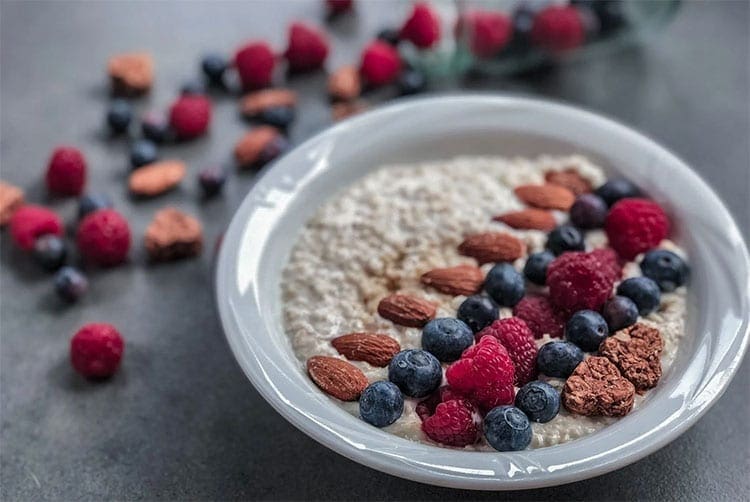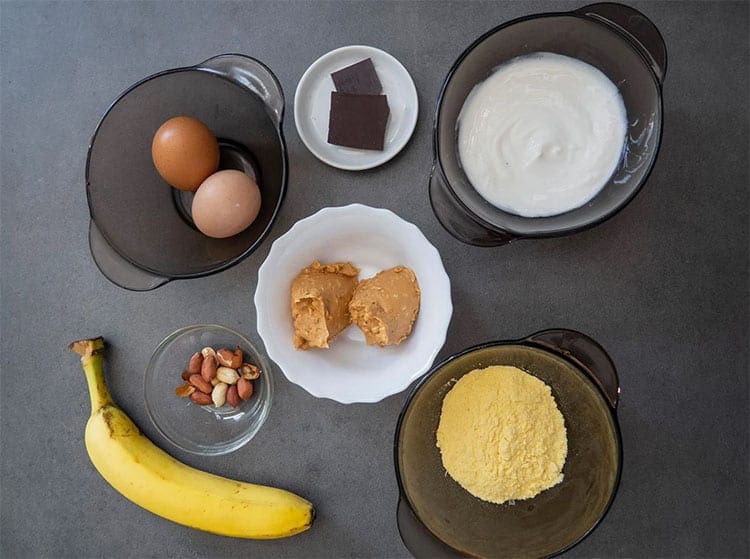1. What is Carb Cycling?
Everyone at least once in his life has tried to reduce his weight.
Probably it started from the exclusion of some products: “I won’t eat potatoes and bread anymore and I’ll go to the gym and I’ll lose weight”.
If you have reduced the supply of energy and grown physical activity, then you should see effects. After initial happiness, he quit and came back to your output weight.
Then the Internet and friends probably challenged you: “Are you carbohydrates-fan or fat-fan?”
If you chose carbohydrates, you probably extremally reduced the supply of fats and exposed yourself at, for example: hormonal disorders or vitamin deficiency.
If you chose fats, you have decided to try one of two diets:
LowCarb or ketogenic which decrease resource of glycogen (in consequence: worse sport results), mood swings, constipation (because of too low supply of roughage), deficiency of microelements (for example: potassium and flavonoids) and eating disorders.
After that choice you made, you were convicted and try to broaden your knowledge which supports the thesis. You also not often use reliable sources.
Many people have stopped at that stage but when you try to look objectively then you saw that the other thesis is not that bad as you thought.
Then you came back with the knowledge to a balanced diet and generally accepted rules.
After that, you were trying to search deeper and found more expanded strategies with more options and – primarily – preventing routine.
If you are at this moment, it explained why you are here, looking for more information about carb cycling diet.
Carb cycling is a nutritional strategy described for the first time by Chris Powell who was using it in fitness and bodybuilding environment.
In the beginning, people believed that using this method will force the organism to burn fat tissue and getting muscles grown but now we know this is possible only if it concerns beginners, people who came back to the gym after a long break and people using steroids.
Carb cycling depends on manipulation in quantity of supplied carbohydrates at a distance of week.
If we’re trying to use that method we need to change not only a quantity of ate carbohydrates in a day but all of the daily energy.
We have to divide our weekly nutritional plan for days with a high, medium and low supply of carbohydrates adjusting it to intensity of our training units and sport discipline that we practice.
2. Carb Cycling Meal Plan
Example:
- a day of intensive training – day with a high level of supplied carbohydrates
- a day without training – day with a low level of supplied carbohydrates
- Monday – day with a high level of supplied carbohydrates and with intensive training
- Tuesday – day with a low level of supplied carbohydrates and without training
- Wednesday – day with a medium level of supplied carbohydrates and with moderate intensive training
- Thursday – day with a high level of supplied carbohydrates and with intensive training
- Friday – day with a low level of supplied carbohydrates and without training
- Saturday – day with a medium level of supplied carbohydrates and with moderate intensive training
- Sunday – day with a high level of supplied carbohydrates and with intensive training
And so on…
There are plenty of variants and I’m introducing that which is most often described. If we are using this method, we choose days individually.
In this way, we are divided on two days with high, two days with medium and three days with a low level of supplied carbohydrates.
In this strategy, we eat 5-10 g of carbohydrates for every kilogram of body weight for one day and we adjust the number of carbohydrates depending on the intensity of effort of the day.
Level of supplied protein and fats is still for every day, we don’t change it.
According to research in endurance sports, we should eat 1,2-1,4 g protein for every kilogram of body weight for one day. That quantity let our organism to regenerate efficiently and to rebuild damaged muscle fibers. A higher level of supplied protein is recommended for people who want to reduce body weight or for injured.
Fats should constitute 30% of our daily energy supply. We need to pay attention to the quality of that fats and to eat mostly monounsaturated and polyunsaturated fats. Saturated fats should constitute only 10% of our daily supply of fats.
There are variants of carb cycling which contains changing levels of supplied fats according to daily supplied of carbohydrates. In that way, a day with a low level of supplies carbohydrates is also a day with a high level of supplies fats and similarly, a day with a high level of supplied carbohydrates is a day with a low level of supplied fats.
Carb cycling can be used for reducing body weight, increase body weight and preservation of body weight.
3. Carb Cycling Diet
If you are planning to implement a strategy of carb cycling diet, pay attention to:
– covering the daily supply of protein (meat, fish, legumes, dairy products, eggs, protein supplement) and even distribution throughout the day (20-40 g of protein per meal)
– paying attention to the quality of consumed fats, it is necessary to ensure an adequate level of omega-3 and omega-6 acids (fish, nuts, oils, avocados, linseed)
– covering the demand for minerals and vitamins (including sodium, potassium, iron, magnesium, vitamin D)
– ensuring adequate volume and calorific density of products (a lot of vegetables, wholemeal products, protein in solid form) and fiber supply in quantifying of 35-40g/day, especially on days with a low supply of carbohydrates
– assurance of gastrointestinal comfort (in the prevention of flatulence, the feeling of overeating and heaviness) during days with a high supply of carbohydrates by using more loose forms of carbohydrates such as: energy gels, fruits, not necessarily whole grain products, isotonic drinks; use of protein shakes based on protein supplements)
– adequate hydration (by drinking water and isotonic drinks)
Example:
Man – 27 years old – 70 kg – 177 cm
low physical activity
Established supply of energy: 2346 kcal
Carb cycling: 2 days with a high supply of carbohydrates, 2 days with a medium supply of carbohydrates and 3 days with a low supply of carbohydrates
Protein: 1,4g * 70 kg = 98 g of protein/day = 392 kcal
Fat: 30% * 2346 kcal = 703,8 kcal = 78,2 g of fat/day
Carbohydrates: 2187,85 g/week
Days with a high level of supplied carbohydrates: 547 g = 2188 kcal
Days with a medium level of supplied carbohydrates: 273,5 g = 1093,9 kcal
Days with a low level of supplied carbohydrates: 182,3 g = 729,28 kcal
The total quantity of kilocalories/day:
Days with a high level of supplied carbohydrates: 3283,8 kcal
Days with a medium level of supplied carbohydrates: 2189,7 kcal
Days with a low level of supplied carbohydrates: 1825 kcal
4. What is Carb Cycling Used For?
Most of those who use this strategy count on a faster weight loss compared to a balanced reduction diet or Low Carb diet.
These people forget that the main factor determining the loss of body fat is the energy deficit calculated on a daily or weekly basis.
Comparing a person using carb cycling (from the above example) where the supply of kilocalories over a week ranges from 1825 to 3283 will achieve the same results in reducing body fat as a person who uses balanced reduction diet with a still value of 2346 kcal.
There is, however, a study which consisted in a long-term comparison of a reduction diet with the same energy deficit with an alternating application of a reduction diet every two weeks with a diet with zero-calorie balance.
The result of the study was a greater decrease in body weight and body fat in the group using alternate energy deficits with zero-calorie balance, which was associated with a less serve decrease in resting energy expenditure.
The higher the drop in this index, the more difficult it is for us to reduce our body weight.
The conclusion of this study may indicate an increased reduction efficiency while using carb cycling, but the period of using greater energy supply should be distinguished – 2 weeks with zero balance and 2-4 days in a week with days with medium and high carbohydrate supply.
In the case of carb cycling, time is important, as these 2-4 days is a too short period to record the beneficial effects of increased energy supply.
The main benefit of carb cycling diet is to improve insulin sensitivity and prevent insulin resistance.
Insulin is an anabolic hormone produced in the pancreas, which increases the storage of glucose, fatty acids, and amino acids.
After eating a meal, insulin is released (the more carbohydrates in a meal = the more insulin is released), which is designed to reduce blood glucose levels.
The use of days with low carbohydrate supply is to improve insulin sensitivity, which contributes to more effective use of energy from food. This approach is not fully justified because we can find studies that show completely different results in terms of carb cycling assumptions.
This study presents an improvement in insulin sensitivity, lipidogram and fat reduction (with particular emphasis on abdominal fat) over a period of 8 weeks based on an Asian high-carbohydrate diet (70% energy) with low fat intake (15%) and optimal fibre (33g) compared to a western diet with lower carbohydrate (50%), fibre (13g) and higher fat intake (34%).
This experiment leads to reflection on the use of days of low carbohydrate intake, because what is the reason to be tired in days with low energy availability when the improvement of the main parameter (insulin sensitivity) can be achieved on a diet with constant energy supply?
According to this study, in order to improve insulin sensitivity, we should not be afraid of high carbohydrate intake, but more attention should be paid to ensuring adequate energy balance and quality of consumer products.
5. Is There any Sense of Using Carb Cycling Diet?
That depends. Each diet should be considered according to your individual preference.
An unquestionable advantage of carb cycling is that on days with high carbohydrate intake during long-term reduction, the person using this strategy can afford more products, which in general are not “healthy” such as: jellybeans, bars or sweetened drinks.
Another advantage during days with high carbohydrate supply is an increased quantity of food when the person will be able to saturate, eat more, which will result in better mental comfort.
However, it should not be forgotten that a well-balanced and properly prepared diet with a constant energy supply should also have such an effect.
One aspect that also needs to be touched is that after intensive training the athletes often get their so-called “wolf hunger”.
Days with high carbohydrate supply will be helpful in reducing the risk of snacking and will provide greater mental comfort. At the other end of the spectrum, there will be people who will have problems with eating more energy after intensive training.
In such people, we can use the flexibility of this strategy and apply low/medium carbohydrate supply on days of intense exercise, while remembering to maximize the glycogen recovery process.
People from the example above may have more pressure to eat on non-workout days and in this case, we can use days with high carbohydrate intake.
Another benefit of using carb cycling will be the phenomenon of introducing “something new” in our dietary management.
Each of us has a friend who loves new things, whether it’s the latest smartphone features, the latest apps for new opportunities, etc. For such people, the application of the new nutritional strategy will give a new impetus to action.
Their motivation will increase, which will result in the faster achievement of the goal and less risk of breaking the recommendations during the “traditional” approach.
This strategy has both advantages and disadvantages. This method (especially for people who are perfectionists) may increase the risk of eating disorders, which in the future may result in bulimia or anorexia.
In summary, carb cycling diet is a strategy that can be successfully applied to athletes. Their lifestyle must be taken into account and the strategy must be adapted to ensure that they are as comfortable and as individual as possible.
The interview should include questions aimed at getting to know the athlete’s current habits, such as: number of meals, number of snacks, the intensity of training, physical activity other than the discipline, amount of sleep, taste preferences, supplementation, medications taken, allergies, etc.
Article by Damian Chlanda, Cyklopedia
Index
https://journals.lww.com/acsm-msse/Fulltext/2016/03000/Nutrition_and_Athletic_Performance.25.aspx
https://www.tandfonline.com/doi/abs/10.1080/02640414.2011.589469?journalCode=rjsp20
https://www.ncbi.nlm.nih.gov/pubmed/12032647?dopt=Abstract
https://www.ncbi.nlm.nih.gov/pubmed/17277604
https://www.ncbi.nlm.nih.gov/pmc/articles/PMC4167335/?fbclid=IwAR1Luy5uLuLNfrvh8_iDDbE48kCTj1ygTxXkv0jWe6arMCWs7olNjcaQf9E
Rosenbloom CA, Coleman EJ. Sports Nutrition: A Practice Manual for Professionals. Academy of Nutrition & Dietetics; 2012.
Moore DR, Robinson MJ, Fry JL, et al. Ingested protein dose response of muscle and albumin protein synthesis after resistance exercise in young men. The American Journal of Clinical Nutrition. 2009; 89(1): 161–168.
Lukaski HC. Vitamin and mineral status: effects on physical performance. Nutrition. 2004; 20(7–8): 632–644.
No products found.




















